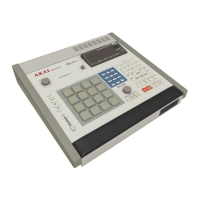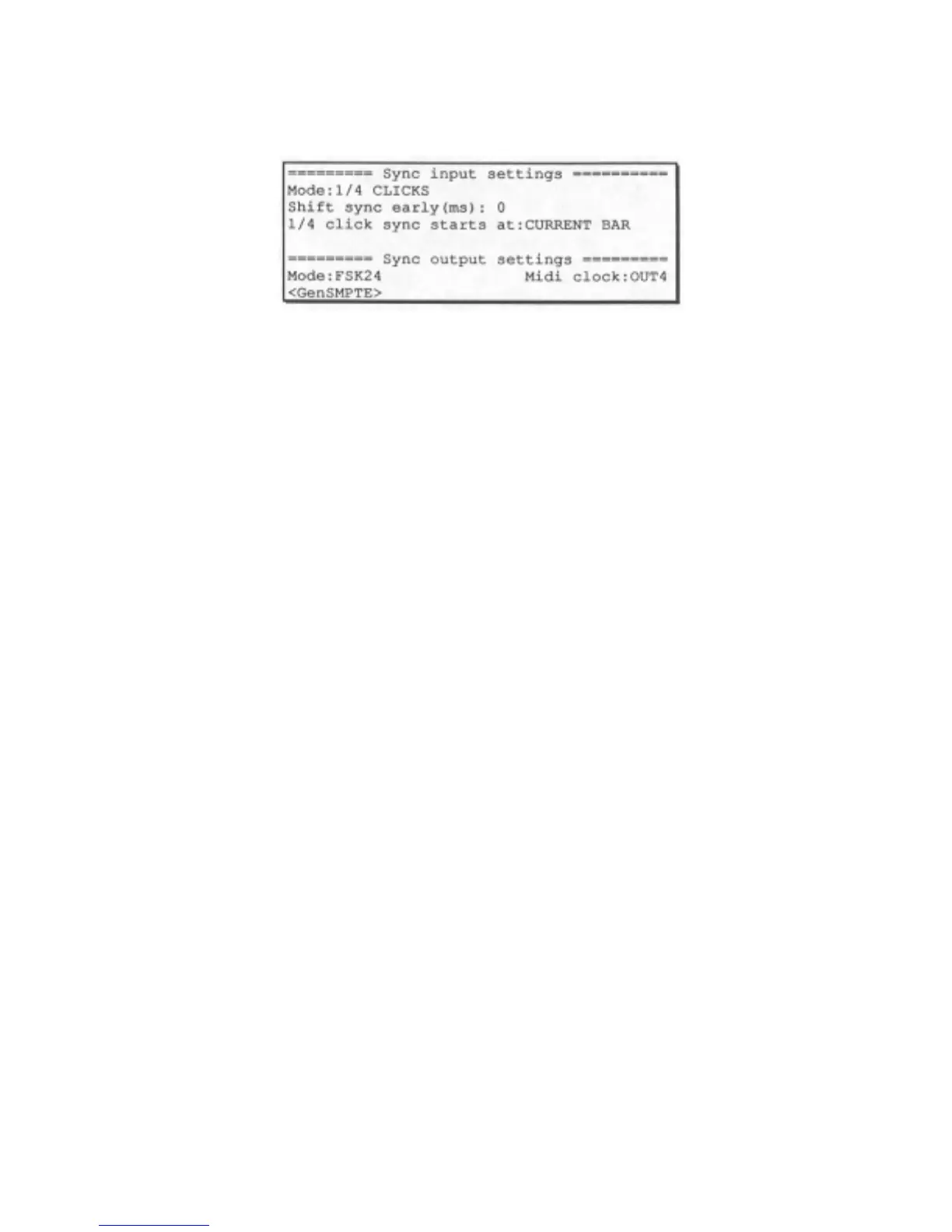Section 8: Syncing to tape and other devices
179
All of the data fields in each of the screens are described below:
• The MODE field (in the SYNC INPUT SETTINGS section of the
screen): This field is used to select the type of sync signal for the MPC60 to
receive sync from an external device or tape. There are seven possible types
of sync which the MPC60 will accept, but only one may be active at one
time.
Further, whichever type of sync is selected, the MPC60 always stands
ready to receive sync- it does not need to be switched into a "sync ready"
mode. As soon as it receives a sync signal from the selected source, it
automatically enters play mode. The only time that it ignores external sync
signals is when play mode has been manually entered by pressing PLAY
on the front panel, but once STOP is manually pressed, the MPC60 once
again stands ready to receive sync.
The seven possible types of sync which the MPC60 may accept are listed
below. This field is used to select which one of these signals is currently
active:
1. FSK24:
This is a standard general purpose tape sync code commonly used
in drum machines and sequencers. It stands for "Frequency Shift
Keying at 24 2400 Hz/1200 Hz transitions per U4 note". This
code contains no location information, so when syncing to it, you
must start both devices from the beginning of the song in order
for them to play in sync. Because of this, the MPC60 always plays
from bar 1 when sync is first received, if this sync setting is
selected. This code does contain tempo information, so the
MPC60's tempo settings are not used when syncing to FSK.
2. PULSE96:
This signal is not very common and is used when syncing to other
devices only - not for tape sync. It stands for "Pulse sync at 96
high/low transitions per 1/4 note". This is the internal clock
resolution of the MPC60. This code contains no location
information, so when syncing to it, you must start both devices
from the beginning of the song in order for

